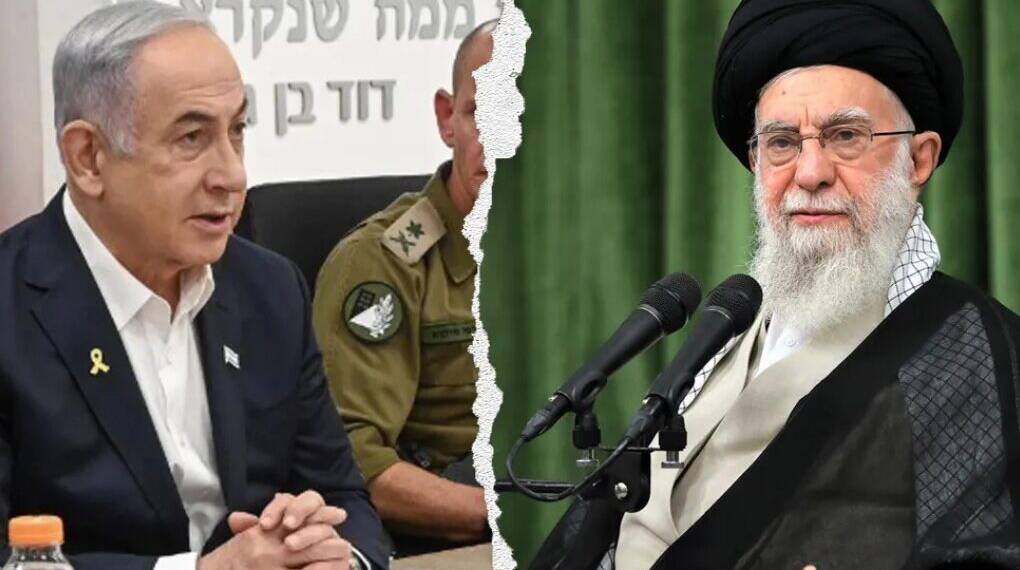Just two months after their brutal 12-day clash in June 2025, tensions between Israel and Iran are once again rising, raising fears that the next war could be even deadlier. Analysts warn that the region faces a volatile mix of missile buildups, military strategies, and a surprising Israeli offer involving water technology, all unfolding amid a precarious geopolitical balance.
The June 2025 Conflict: A Recap
In June 2025, Israel launched preemptive strikes on Iran’s nuclear facilities, citing fears of a nuclear breakout. According to Trita Parsi of the Quincy Institute, the motivations were broader: Israel aimed to shift the Middle East’s balance of power, draw the United States into the conflict, target Iran’s leadership, and gain a freer hand to attack Iran with minimal repercussions.
The 12-day war left Israel and the U.S. claiming a partial victory. Key Iranian figures, including Chief of Staff Mohammad Bagheri and IRGC Air Force Commander Amir Ali Hajizadeh, were killed, and Iran’s missile production suffered heavy losses. In retaliation, Iran launched over 500 ballistic missiles, some breaching Israel’s advanced defense systems and causing significant damage to both civilian and military targets.
Yet, the war fell short of Israel’s larger objectives. Iran quickly replaced its commanders and rallied its population, demonstrating resilience. The nuclear program survived, and protests against the regime were minimal, leaving Israel’s strategic goals only partially fulfilled.
The “Mowing the Grass” Strategy
With the June conflict seen as merely “phase one,” Israeli defense officials are signaling that further action may be imminent. Defense Minister Israel Katz and Chief of Staff Eyal Zamir have described a “mowing the grass” approach: striking Iran repeatedly to prevent it from recovering its military and nuclear capabilities. Analysts suggest a new round of attacks could occur as early as late August 2025, before the U.S. midterm elections potentially complicate foreign engagement.
The Missile Showdown
The next conflict is expected to be a missile-heavy confrontation. Iran retains roughly 1,000 ballistic missiles capable of reaching Israel, and while production suffered during the first war, rebuilding is underway. Experts warn Iran may focus on sheer volume or deploy decoys and cluster munitions to overwhelm Israeli defenses.
For Israel, intercepting these missiles is costly and technically challenging. Arrow-3 interceptors cost $3 million each, while THAAD systems are $12 million per unit. The U.S. deployed nearly 150 THAAD missiles during the June war, consuming a significant portion of its stockpile. Meanwhile, Iran produces missiles more cheaply and rapidly, at about 50 per month.
Despite these challenges, Israel maintains an advantage in air superiority and is exploring advanced missile interception technologies, including boost-phase strikes and directed-energy weapons such as the Iron Beam laser system. Analysts suggest that any future conflict will need to be brief—one to two weeks—with a focus on rapid, decisive strikes.
The Unusual Water Offer
Amid escalating tensions, Israel has launched an unexpected psychological campaign. Prime Minister Benjamin Netanyahu suggested that Israel could provide Iran with cutting-edge water recycling technology—but only if the Iranian regime is overthrown. Former Prime Minister Naftali Bennett echoed this message, highlighting Iran’s severe water shortages due to droughts and mismanagement.
Critics argue that this approach is cynical and likely counterproductive. After enduring bombings and targeted killings, Iranians are unlikely to trust an offer linked to regime change. Observers suggest that this “carrot” strategy may backfire, reinforcing Iranian unity and regime legitimacy.
Risks of a Renewed Conflict
Iran has warned of a decisive response if attacked again. Foreign Minister Abbas Araghchi stated, “We will react in a way that’s impossible to cover up,” signaling that Tehran intends to demonstrate that repeated Israeli strikes will not succeed in weakening the regime.
For Israel, timing is critical: striking before Iran rebuilds its capabilities may offer a tactical advantage, but without full U.S. support, the risks are substantial. The U.S. has limited interceptor stockpiles, and another conflict could quickly escalate into a broader regional or even global confrontation.
The nuclear dimension remains the most unpredictable factor. While Israel demands zero enrichment, Iran’s nuclear posture may become more aggressive if it feels cornered. A miscalculation could spiral into a catastrophic regional war, with far-reaching humanitarian, economic, and geopolitical consequences.
What Next?
As Israel and Iran edge closer to renewed confrontation, the region faces an uncertain future. Analysts warn that any escalation could be bloodier than the June war, potentially involving direct U.S. engagement and testing the limits of regional stability. Meanwhile, unconventional strategies—such as Israel’s water offer—highlight the complex mix of military, political, and psychological tactics at play.
Will there be another war by the end of 2025? And can unconventional incentives like water technology sway public sentiment in Iran? The answers remain uncertain, but the stakes are nothing short of monumental.








